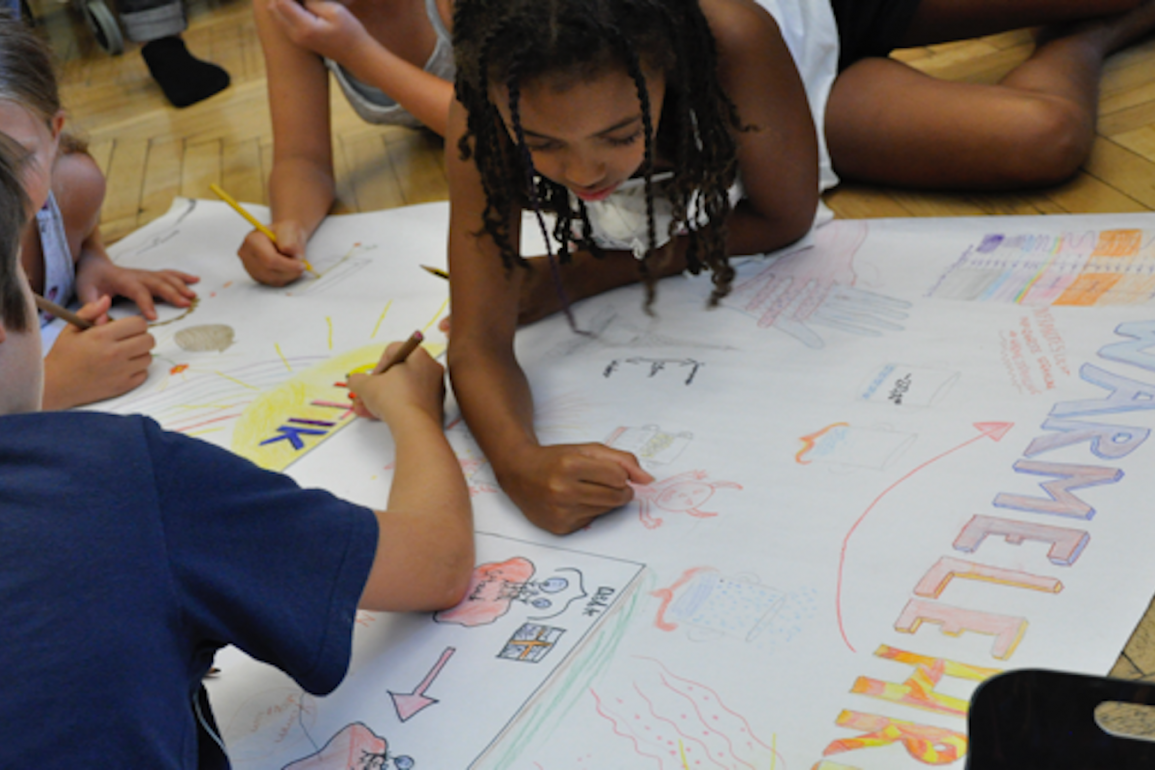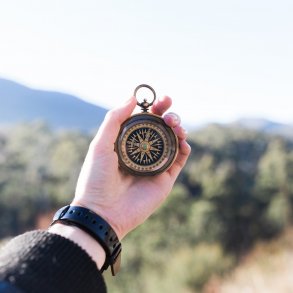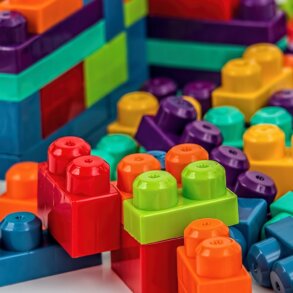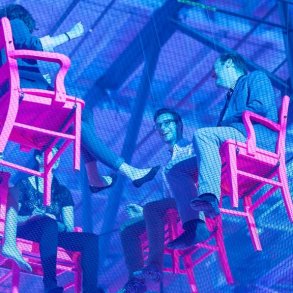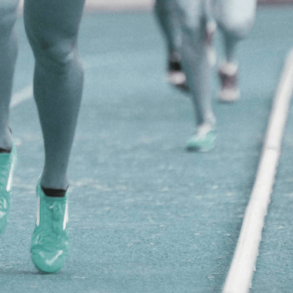By Jelena Bradaric and Gilles Smal for Enlivening Edge Magazine
Introduction by Jean-Paul Munsch, Guest Editor of EE Magazine’s Education edition:
Not only does Colearning Wien integrate the three Teal breakthroughs in their school model, but they extend the idea of learning and working together into a whole village where all ages gather four days a week. This amazing space shines moreover with young writers like Jelena who is 16 years old and co-author of this article. The breakthroughs show up, for example, in learning-guide roles for teachers and — paradoxically enough — with a clear-cut idea of the learning process. We offer you this elaborated example also to show how traditional borders of schools as organizations can be transcended towards a Teal society.
“Why should work and school be separated? I used to bring my own children to school every day and work in another place. But I think it takes a village to raise a child. We should get together and learn from each other. The children from the adults and the other way around.” ~Roland Dunzendorfer, co-founder of Colearning Wien.
A non-school project
“I find it stupid that there is no Colearning on Friday.” ~Rosa, 10 years old
Since September 2015, thirty-five Viennese children and teenagers spend four days a week in Colearning Wien instead of going to school. The intention of the three founders was to create an environment where all ages and generations can learn together. The focus is on the atmosphere and the process of learning, not on the content. In Colearning, we learn how to learn and work in heterogenous groups of various ages.
Based on the principles of the four pillars of learning of the Unesco, inspired by the ESBZ of Margaret Rasfeld and the works of the neuropsychologist Gerald Hüther, the operating system and pedagogical fundamentals of the project are quite groundbreaking. There are no classrooms, no separations based on age, no homework, no standard or fixed content to study, and we have learning guides instead of teachers.
In this article, we will have a look at some of our pedagogical methods. As you will see, we have come to realize that many parallels can be made with the Teal paradigm in organizations.
Laising for deschooling
As you probably already know, the organisational and personal transition to Teal can be very challenging. Most people are used to work in traditional management environments. The conditioning we receive at work and in society usually takes a serious process to be dismantled.
The same is true when it comes to education. Most schools, as we know, function in an Amber paradigm. Since the children spend a significant amount of their time there from a very young age, the conditioning received about learning is particularly important. A specific process to release oneself from this conditioning is necessary in order to start learning in a new way. This process is called “deschooling”.

Since Co-learning is a young project, almost everyone involved has spent time in the regular schooling system. The deschooling process is therefore vital for us, to enable our vision and pedagogical methods. The main method we use for this purpose is called Laising (1). It opens the field for getting back to our natural way of learning. During this process, participants are challenged to :
- Reconnect to their desire to learn: everyone has a natural desire to learn that has sometimes been shut down by coercive pedagogical methods.
- Identify what they want to learn and why: what is necessary for myself, for my life.
- Acknowledge their own responsibility in their learning process: no one but me can take action and learn what I want to learn.
But even more importantly, it is a way to rediscover what is the natural way of learning: a process that involves impulse, interest, enthusiasm, sharing, digging deeper, and finally teaching.
A precious scale
Laising additionally provides us with a very valuable analytical tool to evaluate the current disposition of someone for learning or engaging in a productive activity. In a scale from dependent inactivity to proactive autonomy, the learning guide can feel what attitude or environment the child needs.
- Nest: One needs a safe space for just being. No productive action can be expected. This is where those who need reorienting end up until they find themselves ready to engage in a constructive behavior again.
- Leading: As in the saying “When the student is ready, the teacher will appear”, one needs to follow someone who will be leading an activity of interest. For any kind of action, there is a need for clear instructions at each step and constant supervision.
- Supporting: One is willing to engage in a productive action about his own desires and ideas, but needs to feel the presence of someone for coaching, mentoring, or direct help.
- Letting go: One has become independent in his actions and can take responsibility for them. At this point, there is proactive action to reach the goals that were chosen or accepted.
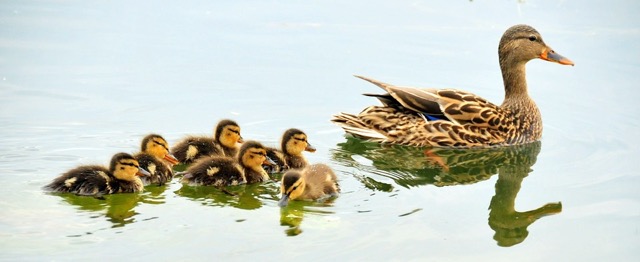
We can immediately feel the relevance for a learning guide of identifying where on this scale a child is in a particular environment, on a particular day, about a particular topic. But with a few steps back, it becomes obvious that this scale proves to be equally relevant for analysing adults’ needs and behaviors in a working environment, as well.
Just as leaving a child responsible for his learning before he finds himself in the 4th stage, expecting self-management from an employee who is not there yet in his working environment can only lead to frustration. So we believe that this scale can actually help analysing the possibility for an individual or an organisation to succeed in its transition to a Teal paradigm, as fully functional self-management requires individuals in the 4th stage
Schaubildarbeit, the Teal jewel
“Without an evolutionary purpose, there is no enthusiastic learning.” ~Florence Holzner, co-founder of Colearning Wien.
The central method we use for learning is called “Schaubildarbeit”, which roughly means “graphical work”. It is a process through which a group learns together and from each other through constant synchronization of their discoveries.
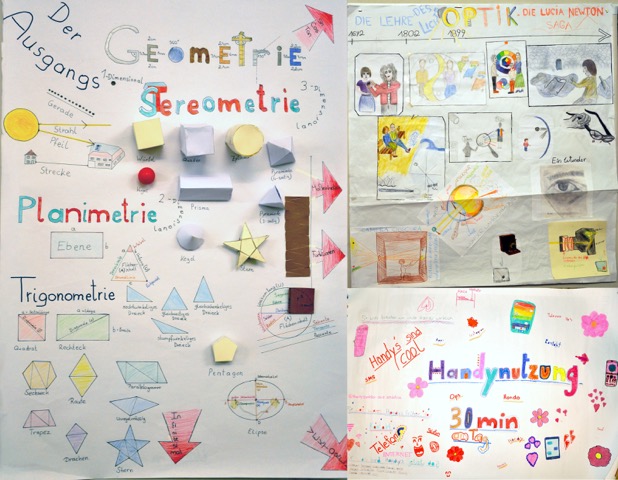
It is necessary to experience this process to actually understand it but we will do our best to describe it here:
- A group gathers around a topic of interest for all to learn about it. Let’s take Global Warming, for example. Each participant needs a personal emotion about the topic and to identify a concrete connection to their lives.
- They will first synchronize by sharing what this topic means for each of them, why they want to learn about it, and what they know already. “The coral reef is very beautiful but I heard it is dying because of pollution. I would like to understand why because it makes me sad”.
- Then comes a discussion about the angles for exploring the topic. In this case, it could be history, geography, physics, biology, economy, politics…. Each participant chooses what he will be working on and starts his own exploration of the topic.
- There are regular exchanges and synchronization phases about the new discoveries until the group is satisfied with the content it has learned. All aspects are put in context and organised so that everyone can get the bigger picture.
- Then comes the time for the graphical representation of the learned content. The group has to agree on a vehicle to share their discoveries (in our case usually several flipchart posters) and how the content will be represented (drawings, comics, abstraction, formulas.…)
- The last step is the representation. It can be a simple description of what is present on the posters, or can be a whole theater play with roles, costumes, and visual effects. Participants invite to this show, younger children+other learning groups+team members who work on other aspects of the project+sometimes some parents/partners. So anyone with interest in the topic is invited to continue the work from there and explore the topic further.
- Finally, the group then reflects on the process they have been through, and makes proposals on how to do it even better next time.
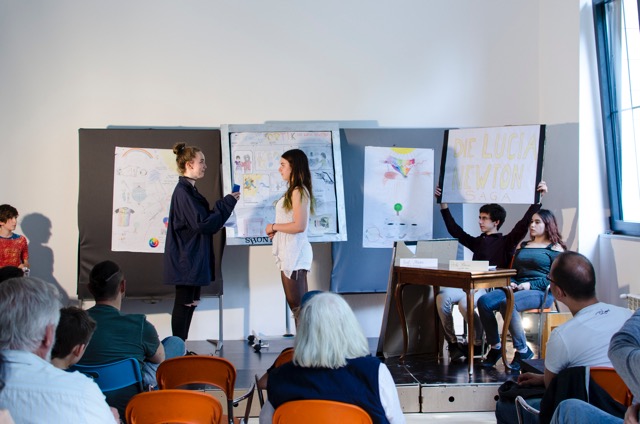
This new method was developed in the 90’s in the Schetinin school in Russia. A few years ago, Richard Kandlin, a former German student introduced it to several alternative schools in Austria.
As mentioned above, the focus is clearly on the process of learning and not on the content. One process can last from a few hours to a few months, and the core principles can be used for group processes about pretty much any kind of topic. We use this method regularly to synchronize within a group about a particular topic.
To us, this method undoubtedly belongs to the Teal paradigm, because it gathers all three breakthroughs.
- Evolutionary purpose: There is no definition of the content that will be learned in the beginning. At every step, the group synchronizes and each participant follows their interests. The process about climate change could end up centered around the coral reef biotope, the chemistry of CO2, or the political impact of the COP21, according to the participants’ interests, discoveries along the way, and the feeling of what is needed at every stage.
- Wholeness: This process works only if each participant is emotionally present in the group and genuinely interested in the topic. It is acceptable that one member of the group doesn’t participate if he/she is not in the mood for it. There is no judgment about what is brought to the process: every error or misunderstanding opens a door to new discoveries. The main responsibility of the process guide is to make sure at all times that each participant feels safe and comfortable in the group and in the process.
- Self-Management: Each participant is responsible for himself and his learning process. But also has the responsibility to honor his commitments and come back to the group with elements that will help the process move further.
In addition, the learning guide takes part in the learning process by contributing like everyone else to the content. His only additional responsibilities are to hold the space and facilitate the process. In Colearning, adult learning guides usually take this role, but in some projects with more experience in doing Schaubildarbeit, it is usually filled by teenagers.
The same way that working properly in a Teal organisation requires people to be de-conditioned from hierarchical reflexes and to have a capacity for self-management, Schaubildarbeit requires people to be “deschooled,” and ideally to be already in a 3rd or 4th stage of autonomy, to work properly. And this is not age-related. We usually have 8-to-18 year-olds working together in a group, learning together and from each other on the same topic.
The village in the city
“ It takes a village to raise a child.” ~African saying, Colearning Wien motto
The vision of Colearning Wien does not stop at groundbreaking pedagogical methods. Frederic Laloux dares to depict a “Teal society” at the end of a management book, and we too challenge the vision of the whole environment in which education should take place.
Discovering the world and life by listening to two parents and a handful of teachers can only lead to a biased narrow-viewed perception.
We believe it actually “takes a village to raise a child”, so we have decided to create one, in Vienna. After two years in a small coworking space in the city center, we have materialized our motto and created “Markhof, the village in the city”.
Our learning center is now nestled in a fully-renovated 2200-square-meter building where we have also developed:
- A coworking space for 50 coworkers
- A series of creative rooms: DIY, painting, pottery and sewing workshops, music and movement rooms, and more
- A seminar center with nice rooms for meetings and events
- A party area for birthday parties or family reunions
- An academy where adults can learn about our methods
- A coliving space for part of our team
- A food coop, managed by teenagers, to have organic food directly delivered from the farmer to the project.
But a village is not only a material place. Its dwellers make it come to life. So we have set up a system of membership to include external people in the project. They have full access to the facility, can use the rooms to meet, work, create, play, celebrate … and learn. One hundred adults will now be present and active around the fifty infants-to-18 year-olds. The possibilities to discover different professions, techniques, instruments, are increased tenfold, enabling everyone to discover new interests and develop new potentials, on the spot, from like-minded members of the community.
So, the purpose of the project has evolved from “We need a non-school place where our kids can learn” to “We create a village where we can live and share our vision, increase our learning possibilities, and ensure our financial sustainability”. A significant part of the team will shortly move in the coliving space on the first floor, making it very challenging to wear masks at work, and thus ensuring further the wholeness in the project. And as you can imagine, our organization design does not look like a pyramid. But this is another story….
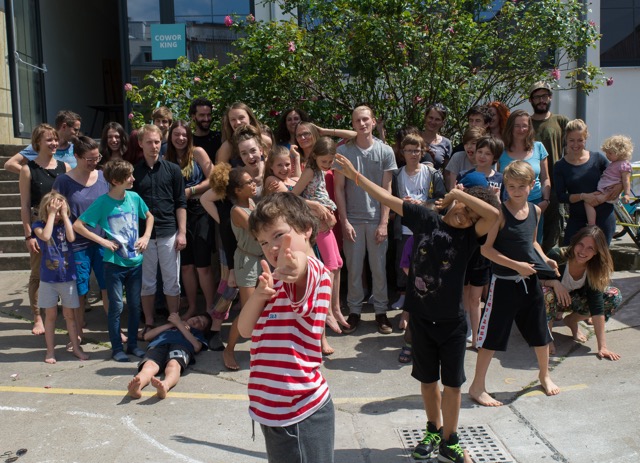
(1) Laising is an old German word meaning to follow your curiosity and get a feeling about it. The method was developed by Dieter Graf-Neureiter inspired through the Schetinin School in Russia.
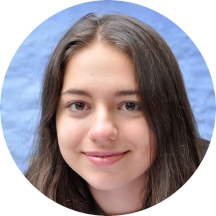
Jelena Bradaric is a sixteen year-old team member of Colearning Wien who contributes in the marketing and organisational development activities. She likes to party during the weekends and is prone to procrastinating. She is a trainer in Laising and a role model for most younger teenagers of the project. Email: [email protected]
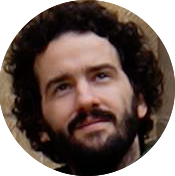 Gilles Smal is working on organisational and economic development in Colearning Wien. His background includes fifteen years in the scouting movement, travels around the world, and disappointing working experiences. He is passionate about organisational design, political analysis, and building structures with wood and ropes. He tends to criticize and dramatize more than is socially accepted. He was born and raised in Belgium, and has been living for the last two years in Vienna. Email: [email protected]
Gilles Smal is working on organisational and economic development in Colearning Wien. His background includes fifteen years in the scouting movement, travels around the world, and disappointing working experiences. He is passionate about organisational design, political analysis, and building structures with wood and ropes. He tends to criticize and dramatize more than is socially accepted. He was born and raised in Belgium, and has been living for the last two years in Vienna. Email: [email protected]
Contact:
Colearning Wien
Markhof, das Dorf in der Stadt
Markhofgasse 19, 1030 Wien
www.colearning.at, email [email protected]
Picture credits: Colearning Featured Image: Simon Rainsborough, Colearning 2: Simon Rainsborough, Colearning 3: Pixabay, free of rights, Colearning 4: Colearning Wien, free of rights, Colearning 5: Martin Dashner
